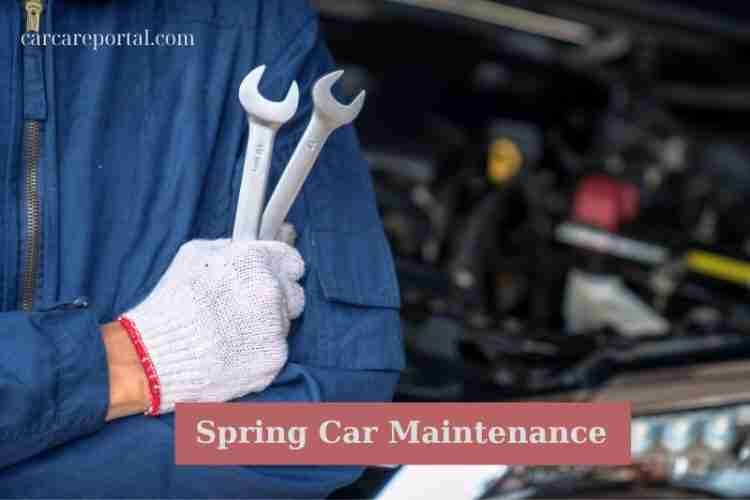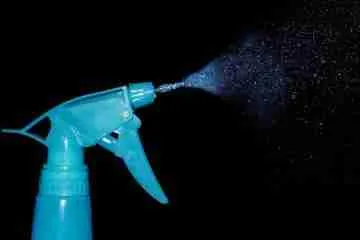Emerging from Hibernation: A Comprehensive Spring Car Maintenance Guide

As the chill of winter recedes and the promise of warmer weather beckons, your vehicle, too, deserves a seasonal transition.
Spring is not just a time for cleaning out closets and planting flowers; it’s an opportune moment to give your car the attention it needs after enduring the harsh winter conditions.
From checking tire pressure to inspecting the health of your engine, a thorough spring car maintenance regimen can extend the lifespan of your vehicle, enhance its performance, and ensure your safety on the road.
This comprehensive guide will walk you through the essential steps to get your car spring-ready, inside and out.
Spring car maintenance
1. Engine Assessment
Go for a quick drive in your car to confirm that the engine runs smoothly and that the “Check Engine Light” is not illuminated.
With the engine turned off, examine the spark plug wires and distributor cap for any signs of wear, cracks, or damage. If needed, you can change the spark plugs, wires, distributor cap, and rotor yourself.
2. Battery Care
Inactivity and cold weather can lead to battery issues. Inspect the battery housing for any leaks, cracks, or accumulation of dirt. Look for worn or corroded cables and terminals.
Ensure that the battery is properly secured. Clean any corrosion from the terminals and the battery housing. If your battery is not maintenance-free, check the water level and replenish with distilled water if it’s low.
3. Oil/Fluids
Regardless of how much you’ve driven over the winter, it’s advisable to change the engine oil and its filter. A do-it-yourself oil change after a particularly cold season can help extend the lifespan of your engine by several thousand miles.
Examine the quality of all the vehicle’s fluids, including the windshield washer fluid, coolant, brake fluid, power steering fluid, and automatic transmission fluid.
These fluids should have a clear appearance and should be devoid of rust, dirt, and other contaminants. If they look clean, you can simply top them up; otherwise, drain and replace with fresh fluids.
Check your vehicle’s owner manual for the appropriate types of fluids to use. If you have a four-wheel or all-wheel drive, consult your mechanic to assess the fluids in the transfer and differential cases.
4. Windshield Wipers
The harsh conditions of winter, including cold temperatures and ice, can deteriorate your windshield wipers quickly. Examine them for signs of wear like fraying, cracks, or deformities.
Heavy snow can also bend the wiper blades out of shape. Replacing the wipers is an easy and budget-friendly task you can do yourself. Also, remember to check the rear wiper blade if you have one.
5. Tires and Suspension
The onset of potholes after winter can affect your tires, wheels, and suspension components, and might even misalign your vehicle.
Check for any wheel deformation and closely inspect the tires for cracks, bubbles, or protrusions. Inflate your tires according to the guidelines set by the manufacturer, and this includes the spare tire as well. Examine tire tread for uneven wear or bald spots.
You can easily find tread depth and air pressure gauges online or at an auto parts retailer. Use them consistently to monitor your tires’ condition.
Replace any tire with a tread depth of 4/32-inch or below. If your car vibrates or drifts to one side while driving, consult your mechanic for an evaluation.
Depending on your location, you may not need winter tires year-round. For example, in Quebec, it’s mandatory to have winter tires between December 15 and March 15.
In other areas, insurance companies may have different guidelines, sometimes suggesting the use of winter tires from November until the end of April.
Regularly check the air pressure in each tire, and make sure it aligns with the recommended levels listed in your car’s owner manual. Both overinflation and underinflation can lead to poor fuel efficiency and decreased grip on the road.
6. Brake Evaluation
Get your brakes examined for general wear. Elements like mud, salt, and de-icing agents can lead to rusting or pitting of disc brake rotors and corrosion of brake components.
If brake components are corroded, it might result in overheating and ineffective braking. While some brake tasks can be handled by a DIY enthusiast, if in doubt, consult a professional.
7. Lighting
Ensure all your vehicle lights function correctly and swap out any non-working bulbs. For prolonged bulb life, add a tiny bit of grease to the contacts of the new bulb to prevent oxidation.
Clean your headlamps and other light lenses. If your headlamps appear hazy or discolored, scrub them using a mix of baking soda and water with a toothbrush or opt for a commercial headlamp restoration product.
8. Check engine belts and hoses
The harsh cold of winter can deteriorate rubber components, especially drive belts and hoses. Inspect belts for signs like cracks, glazing, or fraying. Feel the hoses to identify any soft or weak areas.
Check the coolant hoses for potential dry rot, leaks, especially around the clamps and connections.
Tip: Keep an eye out for any accumulation of dirt or evidence of gnawed wires in the engine area. Warm engine spaces can attract small animals seeking shelter during colder months.
9. Filters
Spring is an ideal season to renew all your car’s filters. Apart from the oil filter, consider changing the fuel, air, cabin air filters, and the PCV valve. These are simple, cost-effective maintenance activities that one can typically handle on their own.
10. Exterior Maintenance
Begin your vehicle’s exterior inspection from the bottom and work your way up. Eliminate any rust-inducing salt deposits by thoroughly cleaning the wheels, tires, and undercarriage, as well as the bottoms of the doors and beneath the sill plates. Flush these areas with copious amounts of clean water.
Utilizing your home’s water supply, hose down the radiator’s front to get rid of dirt, salt, and any leaf debris. For tire cleaning, use non-acidic cleaners. Your owner’s manual will guide you on the suitable cleaner for your wheels.
Proceed to wash your car’s exterior using car-specific shampoo, avoiding household detergents. Employ a soft brush and sponge to reach hidden spots, such as around the door and trunk seals. Make sure to remove all traces of road grime, mud, and dirt.
Complete your exterior care by applying a layer of paste wax, followed by a light coating of sealing wax. To clean the windows, opt for an ammonia-free glass cleaner and microfiber towels, or you can use crumpled newspaper as an alternative.
A routinely cared-for vehicle is crucial for your driving safety.
Regular Maintenance and Leak Repair
Several automakers suggest a “30-60-90” maintenance plan, which involves inspecting or replacing particular parts at 30,000, 60,000, and 90,000-mile intervals. Keeping up with this routine ensures that your car performs optimally and doesn’t suffer from neglect.
Read also:













No Comment